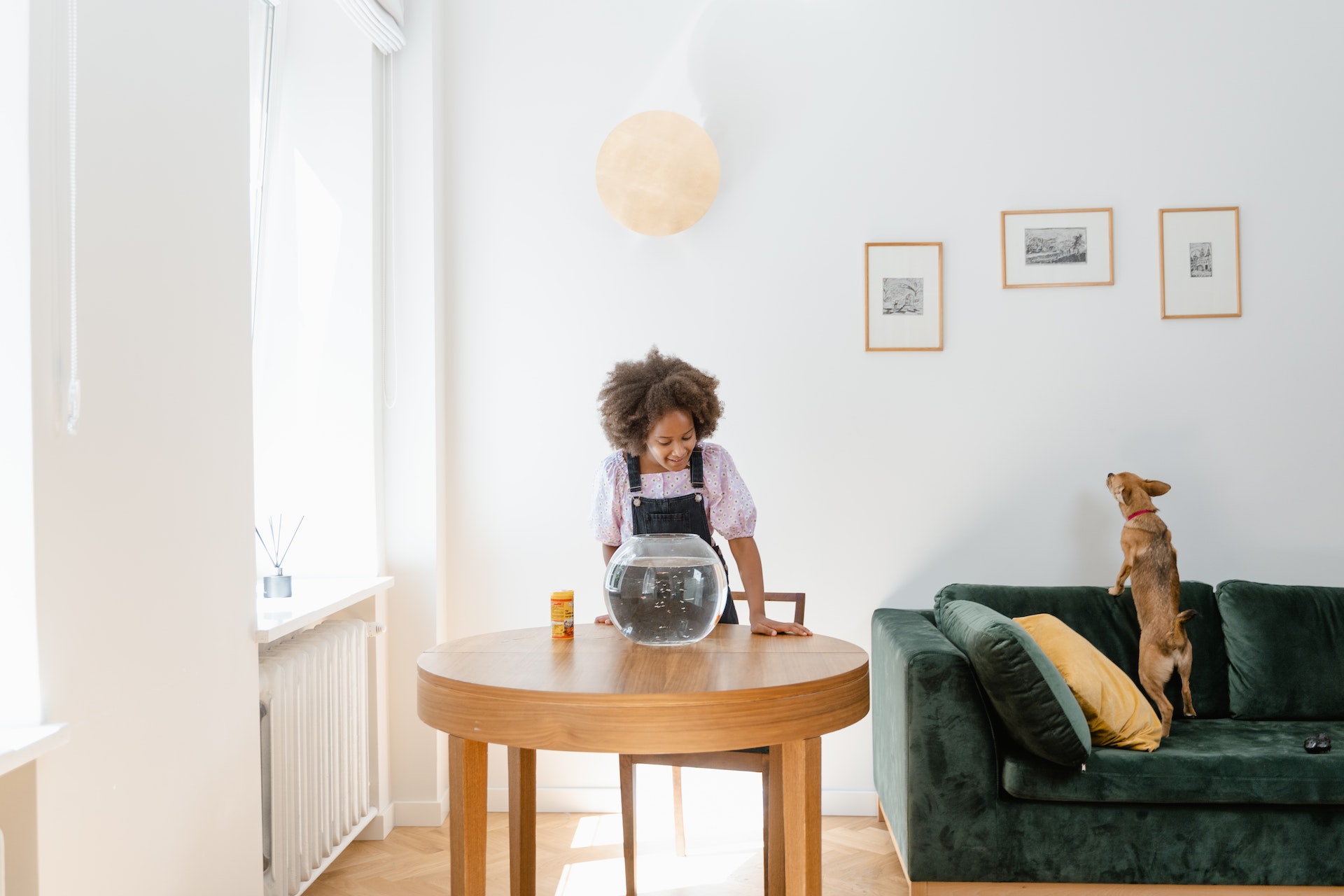PROPERTYSPARK ARTICLE
Child and Pet-Friendly Pest Solutions: Ensuring Safety While Keeping Bugs at Bay
As property managers and landlords, maintaining a pest-free environment is crucial for the comfort and health of your tenants. However, achieving this goal shouldn’t come at the expense of the safety and well-being of children and pets residing on your property. Striking a balance between effective pest control and the health of your tenants’ loved ones requires a thoughtful and informed approach. In this comprehensive guide, we will delve into child and pet-friendly residential pest solutions that ensure a harmonious living environment while keeping pesky bugs at bay.

Understanding the Concerns
When implementing pest control measures in properties inhabited by families with children and pets, it’s important to recognize the unique vulnerabilities that these groups present. Children and pets are more sensitive to certain chemicals, and their curious nature can put them at greater risk of exposure. Ingestion or contact with toxic substances can lead to serious health issues, making it imperative to choose pest control methods that pose minimal risks.
Integrated Pest Management (IPM)
One of the most effective strategies for managing pests in a safe and responsible manner is Integrated Pest Management (IPM). IPM focuses on a holistic approach that combines various techniques to prevent and control pests while minimizing the use of chemicals. This approach includes:
Preventive Measures: Start by sealing cracks, gaps, and entry points that pests could exploit. Regularly inspect the property for potential vulnerabilities and address them promptly.
Hygiene and Cleaning: Keep the property clean and free of food debris that might attract pests. Regularly dispose of trash in sealed containers.
Biological Controls: Introduce natural predators of pests, like certain types of insects or birds, to keep their populations in check.
Mechanical Controls: Use physical barriers such as screens, mesh, or traps to prevent pests from entering the property.
Minimal Chemical Intervention: If chemical solutions are necessary, opt for low-toxicity, child and pet-safe products, and apply them only in targeted areas. Always follow manufacturer instructions carefully.
Natural Remedies
For property managers and landlords seeking non-toxic alternatives, a variety of natural remedies can be employed to repel pests without endangering children and pets:
Essential Oils: Peppermint, lavender, eucalyptus, and citrus oils have been found to repel insects. Mixing a few drops of these oils with water and spraying the solution around potential entry points can act as a deterrent.
Diatomaceous Earth: This natural powder is harmless to humans and pets but is lethal to insects. It works by breaking down insects’ exoskeletons, causing dehydration and death.
Cedarwood Products: Cedarwood has insect-repelling properties and can be used in the form of cedar chips, blocks, or oil. Placing these around the property can discourage pests from entering.
Vinegar: A mixture of vinegar and water can be used to clean surfaces and discourage ants and other insects due to its strong odor.
Professional Pest Control Services
In cases where pests have already infested the property and natural remedies aren’t sufficient, it might be wise to seek professional pest control services. However, caution must be exercised when selecting a pest control company. Look for companies that prioritize safety and offer child and pet-friendly solutions. Ask for detailed information about the products they use, their application methods, and any precautions that need to be taken.
Educating Tenants
Empower your tenants to play an active role in pest prevention and management. Provide them with information about the importance of proper sanitation, prompt reporting of pest issues, and the safe usage of any pest control products you provide. Encourage them to notify you immediately if they suspect a pest problem so that it can be addressed promptly and effectively.
Outdoor Pest Control
Pests don’t stop at property boundaries. To create a truly pest-resistant environment, consider implementing child and pet-friendly pest control measures in outdoor spaces as well:
Landscaping: Choose plants that naturally repel pests, such as marigolds, lavender, and chrysanthemums. These plants can act as a natural barrier against pests.
Regular Maintenance: Keep outdoor areas tidy by regularly mowing the lawn, trimming shrubs, and removing standing water, as mosquitoes and other insects breed in stagnant water.
Safe Pest Control Products: If outdoor pest control becomes necessary, use products specifically designed for outdoor use and follow instructions meticulously.
Pet-Friendly Traps and Barriers
When it comes to child and pet-friendly pest solutions, using traps and barriers can be an effective strategy. Instead of relying on toxic chemicals, consider installing traps designed to catch pests without posing a risk to children and pets. For example, glue traps can be placed in areas where pests are commonly found, and they work by capturing insects without using any chemicals. Similarly, electronic traps that emit ultraviolet light to attract insects and then trap them can be a safe alternative. In addition to traps, employing barriers can help prevent pests from entering specific areas. Installing door sweeps, for instance, can block the entry of insects from under doors, and mesh screens can be used to keep windows open for fresh air while keeping pests out. By incorporating these non-toxic methods, property managers and landlords can proactively manage pest issues without compromising the safety of their youngest residents.
Regular Monitoring and Communication
Maintaining a child and pet-friendly pest management plan is an ongoing process that requires consistent monitoring and open communication. Regularly inspect the property for signs of pest activity, such as droppings or gnaw marks, and address any issues promptly. Encourage tenants to report any pest sightings or concerns as soon as they arise. Keeping lines of communication open not only helps in taking immediate action but also fosters a sense of community responsibility. Consider organizing periodic informational sessions or distributing newsletters that provide tenants with updates on pest management efforts, best practices for pest prevention, and reminders about the importance of notifying management about any pest-related concerns. By fostering a collaborative approach and promoting vigilance, property managers and landlords can create an environment where everyone plays a part in maintaining a safe and pest-free living space for all.
Conclusion
Maintaining a pest-free property while safeguarding the well-being of children and pets requires a thoughtful and strategic approach. By adopting Integrated Pest Management techniques, utilizing natural remedies, choosing professional pest control services carefully, educating tenants, and implementing outdoor pest control measures, property managers and landlords can create a living environment that is both comfortable and safe. The key lies in balancing the need for effective pest control with the responsibility of ensuring the health and happiness of all residents.
Learn how to Become a Top Agent with the Guaranteed 5 Min/Week System
No social media experience needed
Free webinar seat (limited quantities)
Learn the guaranteed 5 min/week system
Become a social media superstar
Constantly get new leads
Beat the competition
Get a special webinar deal
This Agent Tripled His Commissions Just With Social Media
Learn how this real estate agent tripled his commissions just with social media and how you too can become a social media superstar.
Why You Can’t Just “Boost” Your Real Estate Listing
That big blue button has tempted you before right? You want to Facebook Boost your Real Estate listing. Find out why you shouldn’t!
How Much Should Realtors Spend On Social Media
A question we get often from Realtors is “how much should I spend on social media?” Find out exactly how much to spend and how to spend it without getting ripped off!


